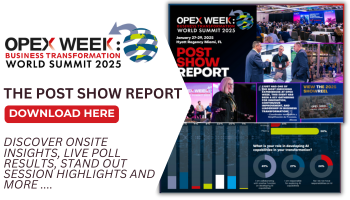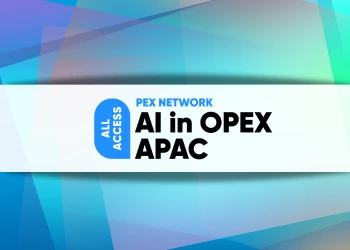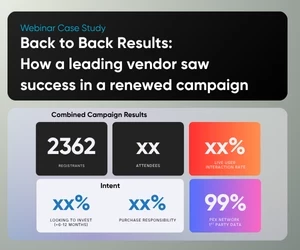How to manage multi-process integration
Businesses that excel at multi-process migration can adapt to market changes, drive innovation and meet customer needs
Add bookmark
Businesses are built on processes. While volumes vary depending on size, sector and specialty, most businesses are managing more processes today than ever before. Ranging from operational and customer-focused to back-end and supporting, individual processes have specific functions that contribute to achieving overall business objectives.
As the number and scope of processes increase, multi-process integration becomes both more vital and challenging for organizations. This is particularly poignant as businesses invest in and adopt new technologies, services and success strategies – all of which introduce new processes.
Ramnath Natarajan is the director of the Global Intelligent Automation Center of Excellence (CoE). He recently spoke at All Access: Intelligent Automation 2024 on the topic of overcoming automation silos to enhance efficiency, foster innovation and support unifies success. After his session, we spoke with Natarajan to learn about managing multi-process integration.
Join the PEX Network community

Don't miss any news, updates or insider tips from PEX Network by getting them delivered to your inbox. Sign up to our newsletter and join our community of experts.
Learn More PEX Network: How important is successful multi-process migration for modern organizations?
PEX Network: How important is successful multi-process migration for modern organizations?
Ramnath Natarajan: Successful multi-process migration is crucial for modern organizations, particularly in reducing business debt, ensuring bot stability and enhancing customer experience across all regions and functions. To ensure a seamless transition, it’s essential to align automation efforts across departments. This can be achieved by establishing a unified vision and a centralized operating model, like an automation CoE, to oversee the initiatives and uphold standards. It’s crucial to recognize that automation alone isn’t a panacea for business process inefficiencies; it merely amplifies them. Hence, involving business experts throughout the project is vital for successful migration without interruptions, leading to significant cost savings.
Moreover, migrating to modern systems helps reduce business debt by replacing outdated, inefficient processes with scalable and flexible solutions, mitigating risks associated with legacy systems. This migration also enables organizations to scale automation quickly based on peak demand, ensuring that resources are efficiently utilized and customer needs are met promptly.
WATCH: What is Process Excellence?
PEX Network: What are the risks of failing to successfully migrate multiple processes and why?
RN: The pitfalls of an unsuccessful multi-process migration are manifold and can significantly disrupt operations. They can lead to downtime, adversely affecting business productivity. Costs can spiral due to the need for extra resources and extended timelines. Business pushback can result in suboptimal adoption of new systems, tarnishing the organization’s operational efficiency and increasing costs. Additionally, during the migration period, organizations may incur higher IT costs due to the need to maintain licenses and operational support for both the old and new systems. Furthermore, enhancing the old system to meet mandatory business requirements can add technical debt, complicating future maintenance and upgrades.
In essence, while the benefits of multi-process migration are clear, the risks are just as significant, necessitating a well-orchestrated approach to mitigate potential issues and capitalize on the opportunities presented by such a transformation.
PEX Network: What factors are key to effective multi-process migration?
RN: In today’s digital landscape, effective multi-process migration is not just advantageous but essential for staying competitive. This process involves transitioning various business operations to modern systems, resulting in enhanced efficiency, cost savings and improved performance. The success of such a migration hinges on thorough planning, stakeholder engagement, effective data management and continuous monitoring. Organizations that excel in multi-process migration can quickly adapt to market changes, drive innovation and better meet customer needs.
Additionally, identifying and discontinuing processes that are unused or have low success rates can streamline operations and allow resources to be focused on more impactful areas. To further enhance the migration process, it’s beneficial to segment the migration by regions or functions, creating smaller, focused pods within the team that can drive better results. Having a dedicated lead for the overall migration is essential to ensure a successful transition.
It’s also essential to have the migrating platform vendor available throughout the migration to address any team questions. Automating code reviews, building pipelines and increasing the use of reusable libraries can significantly enhance developer efficiency and maintain high standards.
PEX Network: What are the biggest challenges of multi-process migration and why?
RN: The challenges of multi-process migration are multifaceted. Moving from on-premise to the cloud introduces additional data security and privacy concerns, which must be carefully managed to protect sensitive data. It is important to set business expectations that the migration is as-is, reducing any new enhancements during this period to minimize complexity and risk. Skill gaps and the need for extensive training can impede the migration process.
Additionally, the availability of smaller businesses (SMEs) can be limited due to competing priorities, and the absence of business experts who are no longer with the company can further complicate the migration. Adopting new standards from applications/ERP teams adds additional overhead and complicates the process further, making it crucial to address compatibility issues with existing systems to avoid disruptions. Furthermore, there are times when process design and solution design documents are not current, leading to potential misalignments and inefficiencies. These challenges are significant as they can affect your multi-process migration.
The 26th Annual OPEX Week: Business Transformation World Summit | post show report

Over 550 transformation leaders from 200 companies across 17 countries gathered to share innovations and stories at OPEX Week 2025. The three unforgettable days sparked groundbreaking ideas and invaluable connections. Don't worry—we've got you covered with a full recap of the 2025 OPEX Week. Download the post-show report here.
To view this content, please fill out the form to register and become a member.
Or, if you're already a member, sign in below to view.
Please note: That all fields marked with an asterisk (*) are required.





















